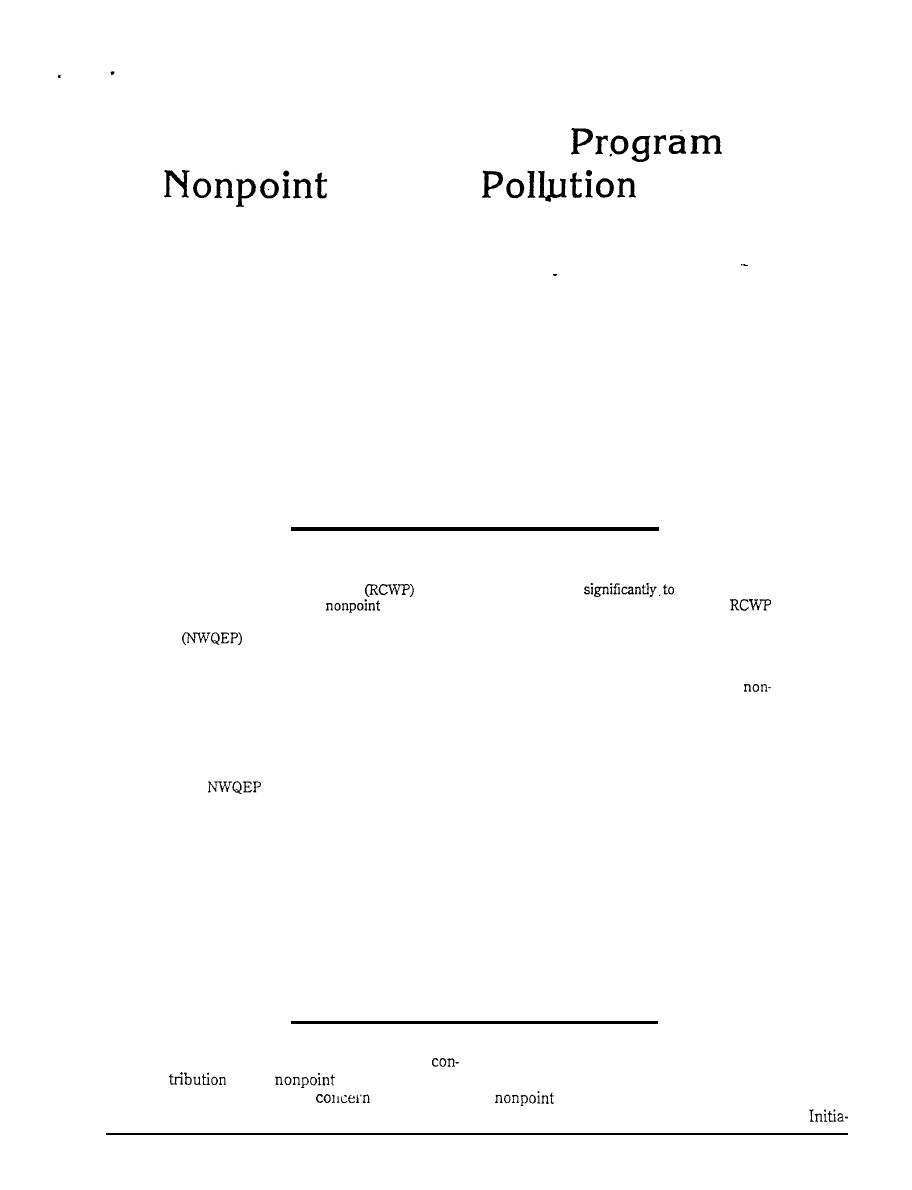
Elements of a Model
for
Source
Control
Steven W. Coffey
Jean Spooner
Daniel E. Line
Judith A. Gale
Jon A. Arnold
Deanna L. Osmond
Frank J. Humenik
National Water Quality Evaluation Project
NCSU Water Quality Group
Department of Biological and Agricultural Engineering
North Carolina State University
Raleigh, North Carolina
ABSTRACT
projects have contributed
the knowledge
Rural Clean Water Program
necessary for reducing
source pollution and achieving water quality goals. An
evaluation, conducted during 1991 and 1992 by the National Water Quality Evaluation Project
at North Carolina State University, shows that many of the 21 projects were highly effec-
tive and others had some effective elements. When expected results were not achieved, the
NWQEP attempted to analyze program and project deficiencies that may have affected the out-
come. Despite difficulties, the RCWP is the best program to date for evaluating agricultural
point source pollution control methods, and it should serve as a model for developing future
programs. RCWP was effective because it had good overall program management and institutional
arrangements that encouraged consultation between the U.S. Department of Agriculture (USDA)
and the U.S. Environmental Protection Agency, excellent program guidance, and effective techni-
cal support for reviewing reports and providing ongoing evaluation.
has developed a model program and a model project based on the RCWP and added
refinements to strengthen weaker elements identified during the evaluation. The model program
includes a technical support group with access to resources for visiting project sites to assist in
project selection, monitoring, evaluation, and developing the plan of work. The model program
needs technical support from the USDA Agricultural Research Service (ARS) for developing and
evaluating best management practices. Increased assistance for monitoring is also needed and
should be provided by the U.S. Geological Survey.
NWQEP suggests three project levels, based on complexity and level of monitoring detail.
This paper discusses the NWQEP model and lists monitoring protocols that should be incor-
porated in program guidance to improve the chances of detecting water quality trends. All projects
need a preimplementation plan of work development to strengthen the problem definitions, select
the critical area, model the watershed to set treatment goals, and establish a means for land treat-
ment tracking. Projects also need a manager, technical support, and core project staff to improve
efficiency and encourage accountability.
A
growing awareness of agriculture's
have influenced Federal agencies to respond to
to the
source pollution
these concerns by developing a demonstration of
problem, increasing
about water
source pollution control capabilities. In
quality, and pressure from special interest groups
response to the 1989 President's Water Quality
361



 Previous Page
Previous Page
